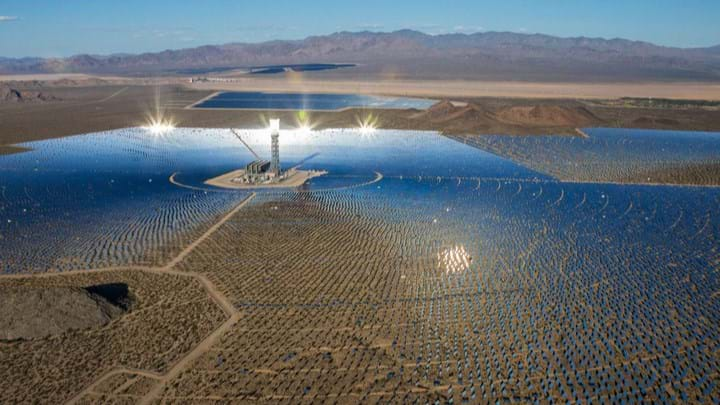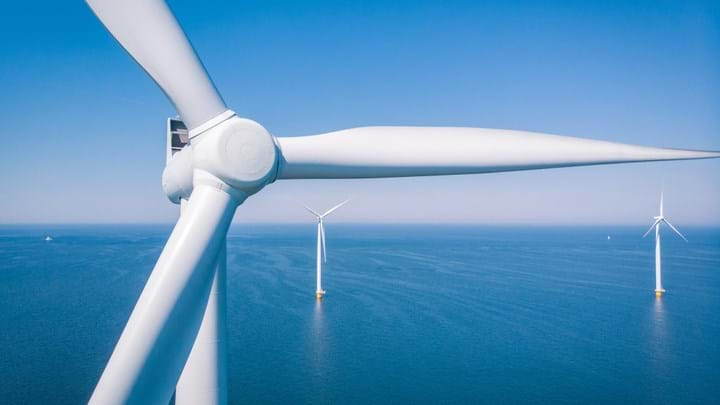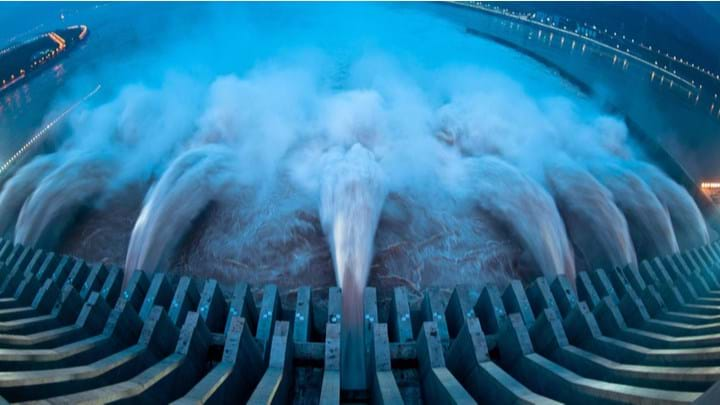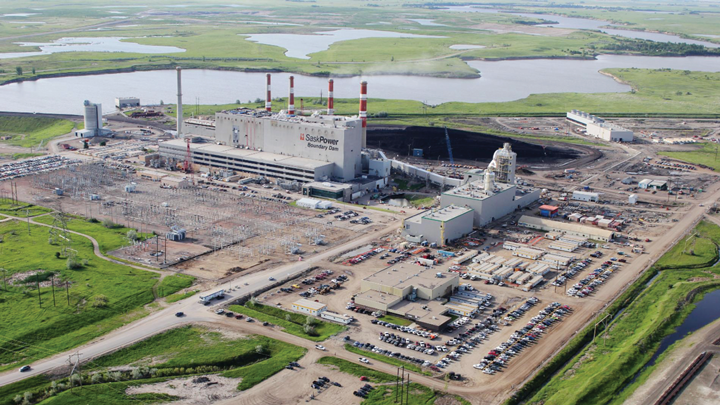Decarbonising Electricity

I’M sure I’m not alone in reflecting on major issues that impact on society, the environment and the economy. Tackling climate change is my key concern, and I suspect that I suffer from eco-anxiety from reading depressing media reporting on shrinking ice caps, rising sea levels, loss of habitat and the increasing frequency of climate disasters.
I can lift my melancholy state by focusing on what has been and what can be achieved to reduce our carbon footprint. So, for others similarly affected by eco-anxiety, it might be heartening to consider carbon reduction options and the central role chemical engineering plays in all greenhouse gas management technologies.
Electrical energy supply is clearly a crucial area for carbon reduction attention. To reduce carbon and other emissions from energy supply, renewables are an obvious option.
To help put into context the information presented, the Didcot B combined cycle gas turbine generators can provide around 1,440 MW of power.
Solar
First discovered by Edmond Bequerel in the 1830s, photons can be used to generate electricity through the photovoltaic effect. Two differing doped semiconductors (germanium or silicon) – p and n type – are layered and create a p-n junction. Trivalent doping for p type, pentavalent for n type. At the junction a photon excites electrons resulting in an electron flow through the n semiconductor.
China holds many of the largest solar plants, with the Tengger, Yanchi, and Datong all providing a GW or more. The Sweihan power project in Abu Dhabi delivering 1,200 MW has recently come on line. At 72 MW, Shotwick, North Wales is the UK’s largest solar park.
Floating solar is also progressing, with a 70 MW plant in Anhui China. India has plans for a massive 1,500 MW floating plant in Madya Pradesh.
There is another solar power option: to use sunlight to heat a fluid and utilise the hot fluid for space heating or for generating electricity – solar thermal energy.
One of the world’s largest solar thermal plants is Ivanpah in California. Here, computer-controlled mirrors track the sun and concentrate sunlight onto boilers located on the top of a centrally-positioned tower. Steam is produced and subsequently used to produce electricity in a conventional generator. The Ivanpah plant output is around 400 MW.

Wind
Using kinetic energy in a moving fluid to provide power goes back many millennia – windmills and waterwheels. Betz1 showed that the maximum amount of energy that could be extracted from a wind turbine is around 60%. Most operational wind turbines are around 40–50% efficient, depending on wind speed.
Wind power is moving apace with the US holding many of the largest onshore wind stations. Alta, Shepherds Flat, Roscoe and Horse Hollow have respective capacities of 1,550, 850, 780 and 740 MW.
The UK is a world-leading offshore wind energy provider including the Walney Extension at 660 MW, the London Array at 630 MW, and the recently-commissioned Beatrice project at 590 MW.
The output available from a single wind turbine has increased by two orders of magnitude since the 1970s. In the past half century it has moved from 0.1 MW to 10 MW in 50 years. GE recently announced the development of the Haliade-X at a colossal 12 MW output from a single turbine. The dimensions of the turbine are also very impressive – rotor diameter of 220 m, height of 260 m (the Shard, in London, is 310 m).
I have a Meccano Magazine collection, 1950–51 and the March 1950 edition has an article by Arthur Nettleton entitled "Electricity from the Wind". It is a fascinating piece, and concludes that "while Britain cannot claim to have pioneered this branch of electrical engineering, its potentialities are now being examined with increasing enthusiasm." It has taken a long time. (Note, Arthur was a visionary, I’m an anorak.)

Hydro
Like wind, hydro power transforms the kinetic energy in a flowing fluid (water) to electricity. The output energy from a liquid turbine is simply the product of turbine efficiency, volume flow and inlet-to-outlet pressure difference.
The type of turbine used is dependent upon the available hydraulic head as shown in Table 1.
Table 1: Turbine application
|
Available head (m) |
Turbine type |
Comment |
|
<15 |
Propeller |
Used for river runs |
|
15–30 |
Kaplan |
Propeller with adjustable blades |
|
20–300 |
Francis |
Most commonly used turbine. Water strikes angled vanes causing rotation. |
|
>300 |
Pelton |
Rotates using spoon-shaped buckets |
The world’s largest hydro energy producers are China, Canada, Brazil, Russia, and France. With an output of 22,500 MW the Yangtze River’s Three Gorges Project is the planet’s largest power station. Furthermore the Baihetan hydropower project is a 16,000 MW station under construction on the Jinsha River, a tributary of the Yangtze. When in operation it will become the world’s second biggest power station.
The largest pumped hydro power station is in Virginia, US – The Bath County Pumped Storage System. It can supply around 3,000 MW of power. Two lakes with a 380 m elevation difference are the energy source.
The UK’s largest hydro station is Dinorwig Power Station, Wales. It was commissioned in 1984 and has an output of 1,700 MW. Interestingly it is Europe’s largest man-made cavern.
Coire Glas is a proposed new UK hydro scheme. Coire Glas is a 1,500 MW pumped storage system located to the south west of Laggan Locks near Loch Lochy. It would be the first large-scale UK hydro plant in 30 years. Presently it is mired in the economics, planning and consents process.

Tidal
Compared with solar, wind and hydro, tidal generation is a much smaller contributor to renewable energy supply. It has an advantage over wind and solar in that it is not affected by weather conditions or seasonal variations.
With a capacity of 254 MW the world’s largest tidal station is the South Korean, Lake Sihwa project. However, should the MeyGen, Pentland Firth tidal plant reach its planned potential of 400 MW, Scotland will have the world’s largest tidal generator.
Geothermal
Geothermal energy is produced using the Rankine cycle. The Rankine Cycle consists of four components:
- A heater that takes energy from the hot rocks and vapourises a pressurised Rankine fluid (usually water).
- The hot pressurised vapour is fed to a turbine where the pressure is reduced with energy extraction.
- A condenser takes the outlet vapour from the turbine and liquefies the Rankine fluid.
- A pump that pressurises the Rankine fluid to the required heater inlet pressure.
The world’s largest geothermal producer is The Geysers cluster in California. Steam from 300+ geothermal wells peppering an area of 80 km2 is used to produce 1,500 MW of electricity in conventional generation systems.
Compared to other renewable options, geothermal electricity production in the UK has had little attention. Most activity has been in Cornwall where granite rock temperatures are the highest in the UK. Geothermal Engineering is currently appraising the United Downs project in Redruth, Cornwall. If successful it could produce 3 MW of electricity plus heat.
Carbon capture and storage (CCS)
CCS seeks to decarbonise electricity generation by post combustion capture of carbon dioxide and sequestering the gas in a geological trap. CO2 capture from flue gases uses an amine (R-NH2) to react with the CO2. The amine is transferred to an associated regenerator that reverses the reaction. The released CO2 is dried and compressed, typically to around 100 bar.
I have concerns with CCS as the capture and compression plant present a large parasitic load. My own calculations indicate a 15% parasitic load for post combustion capture on a combined cycle gas power station. For a coal plant the parasitic load will be in excess of 20%. Hence, whilst CO2 emissions are reduced, more fossil fuels will be required to provide the additional parasitic load. This will also result in increased emissions from fossil fuel extraction, treatment and transport.
According to Carbon Brief there are three operational large scale power generation CCS plants – Petra Nova, Texas, Kemper County, Mississippi and Boundary Dam, Saskatchewan.
The UK has had an on/off relationship with CCS, however recent government statements are much more bullish towards CCS as part of net zero plans. This is presented in a recent TCE article covering promised funding from the UK Treasury.
The most advanced UK CCS scheme is Acorn. Using UK Government, EU and Industry funding, Acorn is currently progressing with detailed engineering of a CCS plant located at the St Fergus gas terminal. The CO2 will be sequestered in a depleted offshore gas field.
Bioenergy with CCS (BECCS) is a very interesting subset of CCS where negative carbon emissions can be achieved. Here a biomass, which has absorbed carbon from the environment, is used as power station fuel. The C-capture pilot BECCS demonstrator at the Drax complex has received much media coverage and could lead the way for large-scale BECCS deployment. It should be noted that the pilot is aimed at a low energy CO2 capture process and does not involve CO2 sequestration.

Nuclear
The role of nuclear in low carbon electrical power generation raises much controversy. With the legacy of Chernobyl and Fukishima, it is hardly surprising that nuclear is not an option for many governments. To my mind that is regrettable when consideration is given to advanced reactor designs – Generation 4.
Generation 4 reactors will be inherently far safer than current designs. There are six reactor technologies being progressed by a grouping of 14 countries (GIF) of which the UK is one:
- Gas Cooled Fast
- Lead Cooled Fast
- Molten Salt Reactor
- Supercritical Water Cooled
- Sodium Cooled Fast
- Very High Temperature
From a chemical engineering standpoint the reactor technologies are cutting edge and all involve advanced thermohydraulics.
Hydrogen
In my view, hydrogen has a limited role in power generation. Around 95% of hydrogen is produced by reforming. To then use that hydrogen for power generation is energy inefficient as there will be two energy vector transitions – gas (methane) to gas (hydrogen) to wire. At each transition around 30% of the energy is lost. It is more energy efficient to deploy CCS on a conventional gas fired power plant with one energy vector transmission, gas to wire.
Electrolysis is touted as a promising hydrogen synthesis technology, but why use the electrical energy to produce hydrogen to reconvert it back to electricity?
I believe hydrogen’s key role is in decarbonising heat.

What next?
When considering net zero electricity production there are no silver bullets. Many of the technologies present other issues – recycling solar panels and wide turbine blades, visual impact, habitat destruction, nuclear waste. Net zero will require all technologies to be utilised wisely with full life sustainable considerations.
What is very heartening is that the required technologies are in place to decarbonise electricity. However, whilst the technologies are in place, more incentives are needed for their deployment. As I have previously stated in The Chemical Engineer, to provide the required incentives requires an effective carbon tax. I am in good company here with Shell, Unilever, Proctor and Gamble, BP and others also stating the same.
Let’s get an effective carbon tax in place and ease my eco-anxiety.
Finally, the role of the chemical engineer in the research, development, design, construction and operation of the aforementioned technologies is pivotal. Our training provides a unique skill sets related to energy knowledge and management.
Could there be a new whynotchemeng – study chemical engineering and help deliver net zero?
Reference
1. Betz, A, Introduction to the Theory of Flow Machines, 1966, Pergamon Press.
Recent Editions
Catch up on the latest news, views and jobs from The Chemical Engineer. Below are the four latest issues. View a wider selection of the archive from within the Magazine section of this site.




